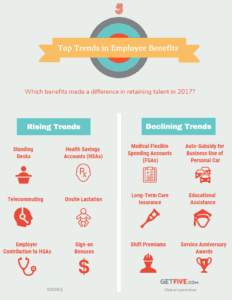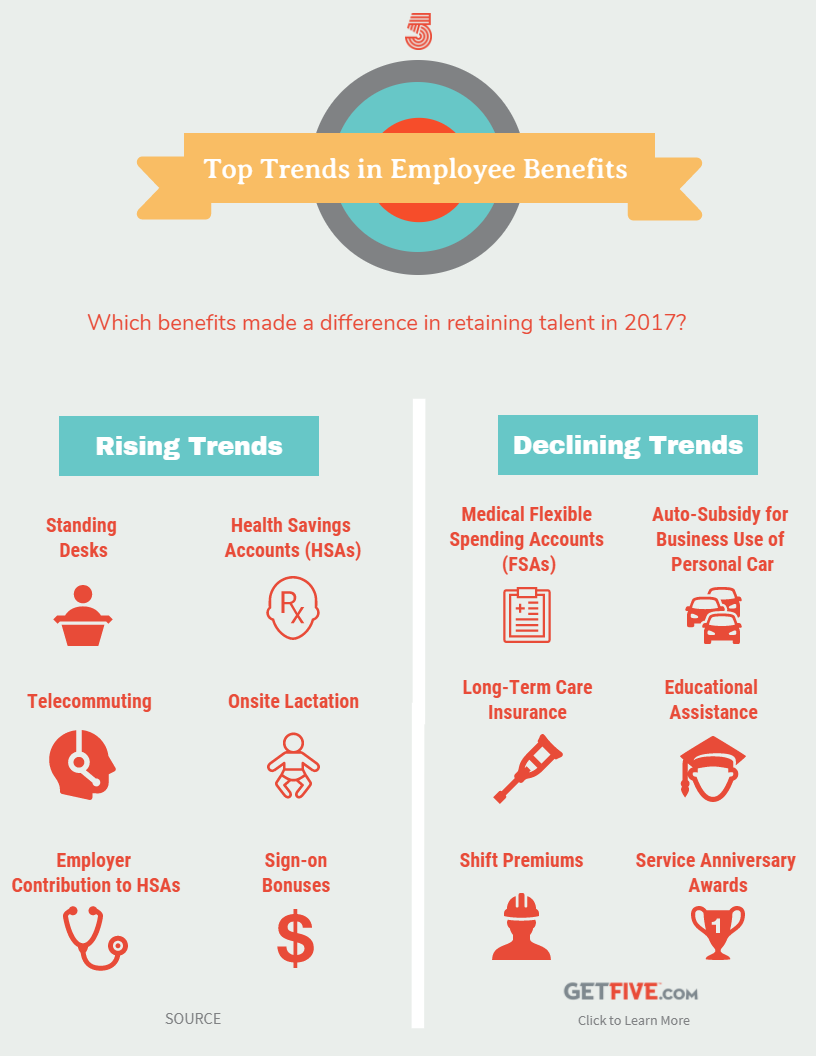HR professionals from coast to coast are crunching their benefits numbers and creatively brainstorming to come up with new solutions to attract and retain talent. Many industries and locations faced recruiting challenges and skills shortages last year that have seeped into 2017.
Salary is just one tool to attract talent. A noteworthy benefits package can make the difference between hiring top workers or losing them to competitors. The 2017 Employee Benefits Report from the Society for Human Resource Management (SHRM) lends valuable insight into what companies must consider to stay relevant in a competitive labor market.
The status quo likely won’t do. Nearly one-third of organizations increased their overall benefits offerings, the study found, and they were most likely to increase health (22 percent) and wellness (24 percent) benefits.
Employee health programs are always a big concern for HR and finance. These can get costly and must be considered carefully. When looking at companies across the country, the SHRM study found organizations are offering health coverage broadly for employees and their families, despite structure. In fact, 95 percent provide health care coverage for opposite-sex spouses, 85 percent provide coverage for same-sex spouses, and just over one-half provide coverage for domestic partners, regardless of whether they are the same or opposite sex.
Some key benefits on the rise include:
- Health savings accounts (HSAs)

- Employer contributions to HSAs
- Standing desks
- Onsite lactation/mother’s rooms
- Telecommuting on an ad hoc basis
- 401(k) fund conversion into Roth 401(k)
- Sign-on bonuses for both executive and non-executive positions
- Shift flexibility
Curious which benefits are declining? Here are some that fewer companies are offering:
- Medical flexible spending accounts (FSAs)
- Undergraduate and graduate educational assistance
- Long-term care insurance
- Shift premiums
- Automobile subsidy for business use of personal vehicle
- Service anniversary awards
One benefit that has been getting a lot of press recently is paid parental leave. The SHRM report found 30 percent of organizations provided paid maternity leave, which includes coverage by family or parental leave policies but excludes what is covered by short-term disability or state law. This offering has increased slightly from 26 percent in the 2016 report. On average, organizations that offered paid leave for a new child provided 41 days for maternity leave, 22 days for paternity leave, 31 days for adoption leave, and 36 days for surrogacy leave.
If you’re seeking to stand out, it might make sense to consider adopting a robust paid leave policy. While it can be costly, it can attract and retain talent effectively if it’s of high value to your target market. When looking at benefits, really consider the needs of employees now and in the future. Young professionals are often buying homes and starting families. However, if many of your hires are new graduates, their focus might be on student loans. Older demographics might want to focus on leadership training and retirement benefits.
In the game of benefits, you can’t lead in them all. Focus on what makes sense for your company from an employee and budget standpoint. Knowing the trends from reports like this one from SHRM can certainly help direct you down the right path.









